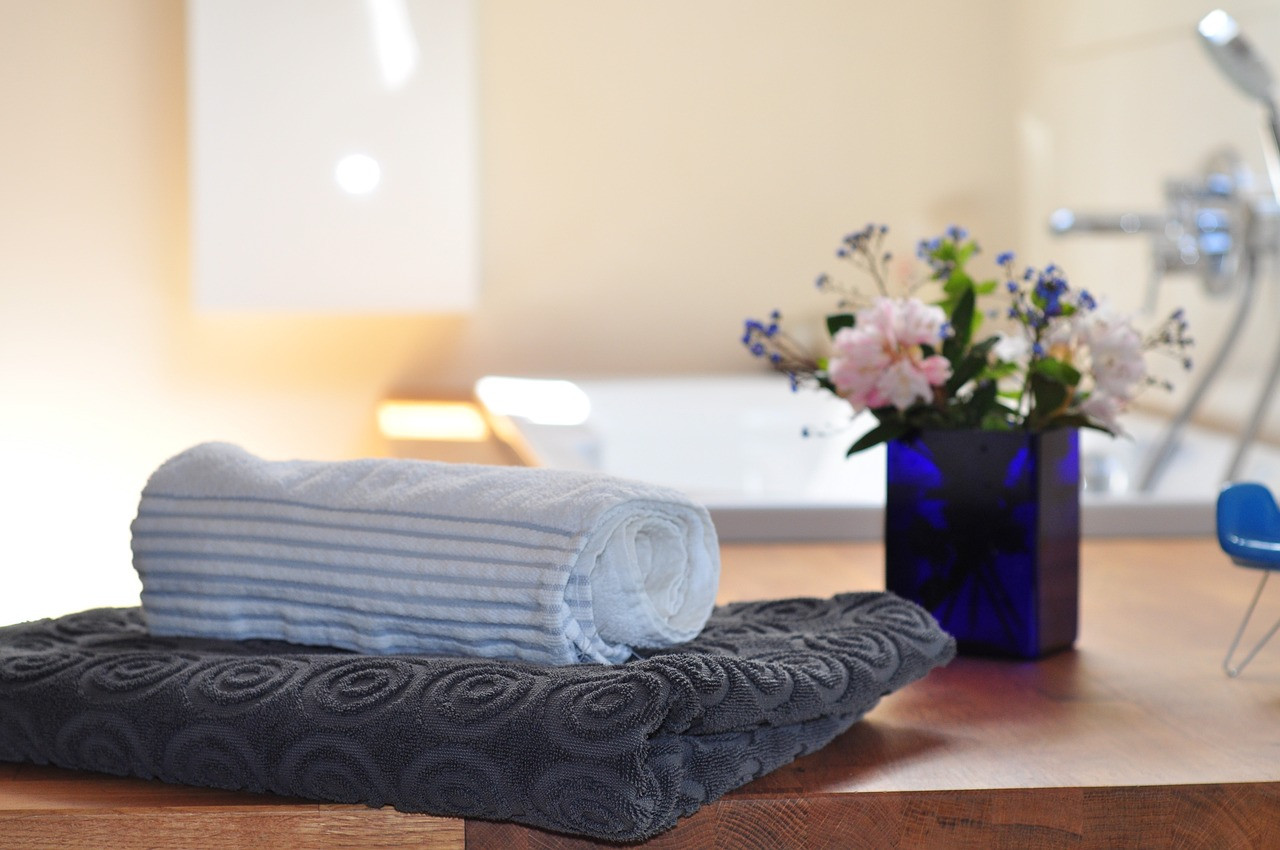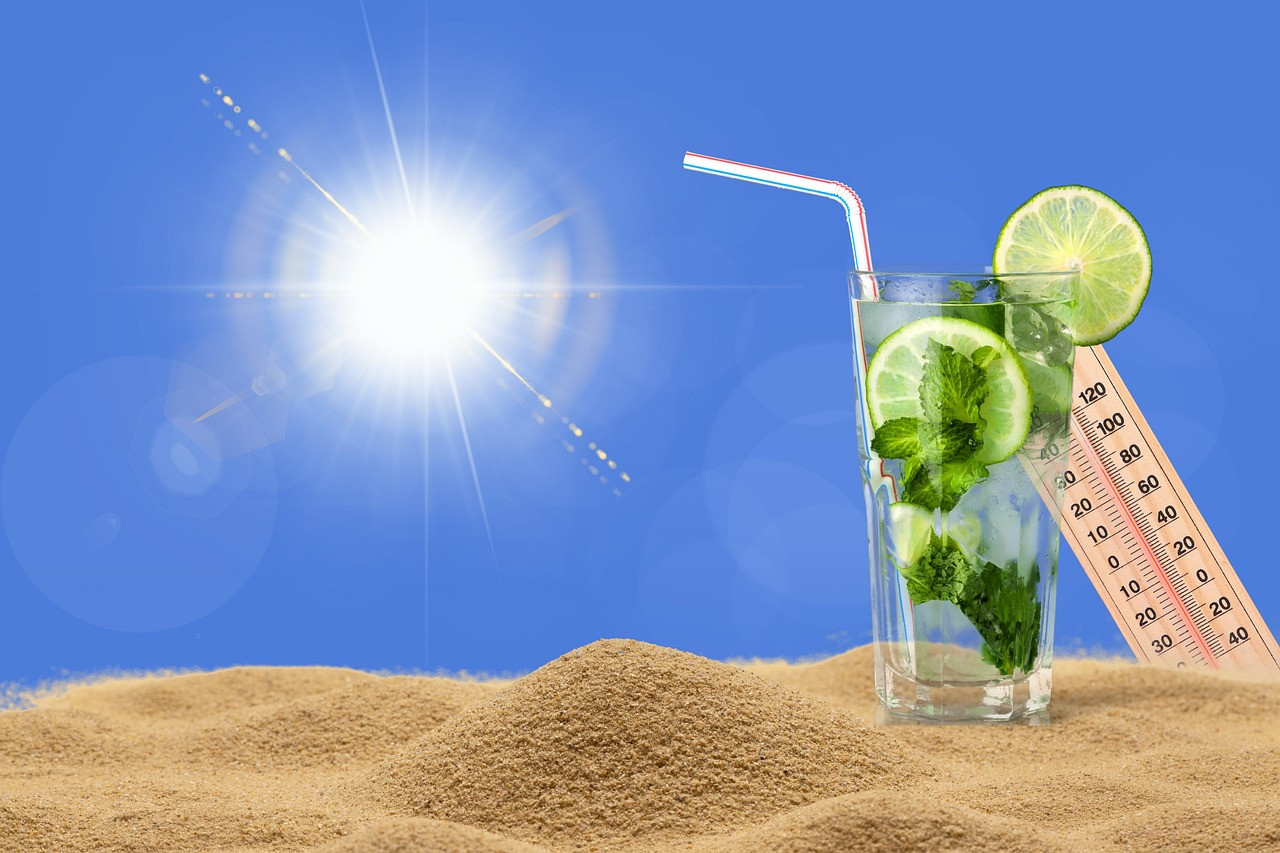You spritz it on, thinking it has a beautiful scent, but did you know most perfumes are loaded with hidden toxins that mess with your hormones, your brain, and even your fertility?
Seriously. The word “fragrance” on a label can legally hide thousands of chemicals, including:
• Endocrine disruptors – Linked to infertility, thyroid dysfunction & hormone imbalances.
• Carcinogens – Found in breast, ovarian, and prostate cancer cases.
• Neurotoxins – Cause brain fog, headaches, anxiety & nervous system damage.
• Respiratory irritants – Worsen asthma, allergies & even pollute your indoor air.
And worst of all? These chemicals don’t just sit on your skin. They fill the air in your home and get absorbed into your body through both lungs and skin, affecting not just you but your whole family. And the ingredient "fragrance" is not just in perfumes, it's in everything from cleaning products, to cosmetics, to lotion, and everything in between. And so many wonder why their hormones are messed up or why they have headaches all the time!
If you are one of those people who have wondered why certain perfumes give you a headache, make you feel foggy, or just don’t sit right with you… this is why. But even if you have no noticeable reaction, they can still cause harm, especially over time.
So What’s the Solution?
You don’t have to give up wearing perfume—you just need one that’s actually safe.
Which is why I’m SO excited I've found Wyld Notes- the first-ever luxury, plant-based, non-toxic perfume. It is called a "fine fragrance," but you will not find the ingredient "fragrance" or any other harmful ingredients inside these bottles.
• 100% plant-based, clean ingredients
• No phthalates, parabens, or hormone-disrupting chemicals
• Inspired by nature, formulated for purity
• Safe for your hormones, your home, and your health
As a woman who has experienced firsthand the effects of toxic products—chronic migraines, asthma, and hormone imbalances—I’m passionate about helping other women make simple swaps that protect their health.
If you’re going to wear perfume, I recommend finding a brand like this because your health is too important to gamble on hidden toxins.
Go here to learn more and take a quiz to find your perfect non-toxic fragrance.
My blogs contain some affiliate links.
Any purchase made is a blessing to my family at no extra cost to you!
Thank you for supporting us!

I’ve never been a fan of perfumes; they always gave me headaches and made me feel unwell. In fact, once I had to quit a job because of the fragrances in the workplace. But for years, I used traditional cleaning products like bleach, Soft Scrub, Windex, and 409 without question because I thought that’s just how you clean. Unfortunately, every time I cleaned, especially in small spaces like bathrooms, I’d struggle to breathe and rely heavily on my inhaler.
These struggles weren’t just limited to cleaning. I had respiratory issues almost daily and used my inhaler frequently, even when I wasn’t exposed to cleaning chemicals. I suffered from frequent headaches, including chronic migraines that would strike every two to four weeks. At the time, I had no idea these issues were connected to the products I was using in my home.
It wasn’t until I started learning about the hidden dangers of common household products that things began to click. The chemicals in those products weren’t just making me uncomfortable; they were contributing to my health problems. Armed with this knowledge, I made a decision: I was done letting these toxins take control of my life.
I returned some products to the store, threw others away, and used up a few with the promise to myself that I’d never buy them again. I replaced them with non-toxic, natural alternatives. Cleaning no longer left me gasping for air or reaching for an inhaler, and after some time, my chronic asthma issues disappeared.
This journey didn’t stop with cleaning products. I started swapping out shampoos, soaps, lotions, and other personal care items for clean options. I even made dietary adjustments to avoid triggering foods. Over time, my migraines lessened in frequency until they were no longer a regular part of my life.
Today, I live in a virtually toxin-free home, and it’s given me back my health and vitality. No more chronic asthma. No more frequent migraines. Changing out those toxic products made such a difference, that looking back, I can hardly believe I ever thought that was normal. I’m so grateful for the fresh start.
My blogs contain some affiliate links.
Any purchase made is a blessing to my family at no extra cost to you!
Thank you for supporting us!


Imagine unwinding in a warm, steamy sanctuary after a long day, all in the comfort of your own bathroom. While professional saunas may seem luxurious, creating a sauna experience in your home shower is entirely possible—and it’s a fantastic way to relax, relieve stress, and even support your body’s natural detox processes. With just a few simple adjustments, essential oils, and mindful time, you can transform an ordinary shower into a rejuvenating, spa-like retreat that’s perfect for unwinding at the end of a busy day. Creating a sauna-like experience in your bathroom shower is easier than it might sound; here’s how to set up your DIY sauna experience at home.
1. Set the Right Temperature
- Warm the Bathroom First: To get the room steamy, run a hot shower on high heat for a few minutes before stepping in. This will raise the overall humidity, making the air feel similar to a steam sauna.
- Adjust Shower Water Temperature: While you’ll want steam, avoid water that’s too hot to prevent discomfort. Aim for a water temperature of around 110-115°F (43-46°C) for safe, gentle steam.
- Close Off the Space: Seal gaps where cool air could enter, like the space under the door, to keep the heat and steam in, enhancing the sauna-like environment. It's best to use a smaller bathroom for this.
2. Add Essential Oils for an Aromatic Experience
- Peppermint or Eucalyptus: Add a few drops of eucalyptus or peppermint essential oil to a damp washcloth and place it on the shower floor. These oils create a refreshing and cleansing steam, ideal for opening sinuses and enhancing relaxation.
- Lavender or Chamomile: For a calming experience, try lavender or chamomile oils, which can create a soothing, spa-like atmosphere, perfect for unwinding. Here's a kit with a great value with even more options and it includes a diffuser. Use the code SHAREYL for 10% off your first purchase.
- Steam Diffusion Tip: Avoid adding oils directly to the water to protect your skin from concentrated oils. Instead, run a diffuser, or place a few drops on a shower steamer (find DIY shower steamers here) or a cloth positioned to catch rising steam but not direct water flow.
3. Time Your Sauna Session for Maximum Benefit
- Short, Focused Sessions: A DIY shower sauna session doesn’t need to be long; 10-15 minutes is typically sufficient for relaxation and gentle detox.
- Monitor Comfort Levels: Step out if you begin to feel lightheaded or overheated. Unlike professional saunas, home setups don’t have the same ventilation and temperature controls, so keep an eye on how you’re feeling.
- Follow Up with a Cold Rinse: For a refreshing finish, turn the shower to cool for 30 seconds before stepping out. This can stimulate circulation and close pores.
By setting your shower for the right temperature, using essential oils, and timing your sessions wisely, you can enjoy a spa-like experience right in your own bathroom! Enjoy the relaxation, mental clarity, and detoxifying benefits of your homemade sauna.
Taking time for self-care doesn’t always mean heading to a high-end spa. With a few simple steps, you can recreate the revitalizing sauna experience right in your bathroom. So, as you step out of your DIY shower sauna, you’ll likely feel clearer, more relaxed, and refreshed. Incorporating this ritual into your weekly routine is a rewarding way to care for both body and mind, bringing the benefits of the sauna to your daily life without ever leaving home.
My blogs contain some affiliate links.
Any purchase made is a blessing to my family at no extra cost to you!
Thank you for supporting us!

Chronic inflammation acts like a silent storm within your body, often remaining unnoticed until it causes significant health problems. Unlike acute inflammation, which resolves quickly, chronic inflammation can linger for months or even years, damaging tissues and organs. Recognizing the signs of chronic inflammation is crucial for maintaining good health and taking preventive measures.
...
If you notice any of these signs, taking immediate action is essential. Evaluate your diet, stress levels, and lifestyle habits, as all play a role in inflammation. Incorporating anti-inflammatory foods, managing stress through techniques like yoga, and consulting a holistic care professional can help you create a tailored plan to combat chronic inflammation and protect your long-term health.

As we dive into the height of summer, it's essential to find ways to keep cool and comfortable. It will be over 100 all week where I live - over 110 several days - totally crazy heat just in time for everyone to be outside for 4th of July celebrations! Be sure to keep your family, pets, and gardens well hydrated and cared for. This week, I'm sharing natural tips to help your family beat the heat and enjoy the sunny days ahead. See below for signs of heat exhaustion and heat stroke and what to do when it happens.
🌟 Tips to Beat the Heat and Prevent Heat-Related Illness:
1. Stay Hydrated
Drink plenty of water throughout the day, even if you're not thirsty. When it's hot, drink more than half your body weight in ounces. Enhance it with slices of cucumber, lemon, or fresh berries for added flavor and nutrients.
Get electrolytes in your system. When you sweat, you lose electrolytes and water—these must be replaced! Try coconut water, sea salt, Ningxia Red, or Vitality Drops in your water.
-Avoid alcohol, sodas, and caffeinated drinks as they can dehydrate you.
2. Eat Cooling Foods:
- Incorporate hydrating and cooling foods into your meals. Cucumbers, watermelon, and leafy greens are perfect summer staples.
- Make chilled soups or smoothies to keep meals light and refreshing.
3. Natural Cooling Remedies:
- Keep a spray bottle filled with water, witch hazel, and a few drops of peppermint essential oil in the fridge. Spritz on your face and neck for instant refreshment. (Carefully avoid eyes)
- Use aloe vera gel, or Lavaderm after sun spray from the fridge to soothe and cool sun-exposed skin.
4. Create Shade:
- Encourage indoor activities during the peak heat hours from 10 AM to 4 PM.
5. Dress Smart:
- Opt for light-colored, loose-fitting clothing made from natural fabrics like cotton or linen.
- Hats and sunglasses are essential for protecting from the sun.
6. Take Breaks in Cool Areas:
-Regularly move to shaded or air-conditioned areas to cool down.
-Protect your skin from sunburn, which can affect the body’s ability to cool down.
8. Limit Outdoor Activities:
-Schedule strenuous activities for cooler parts of the day, like early morning or late evening.
9. Know Your Risk:
-Certain individuals, such as young children, older adults, those taking certain medications, and those with chronic illnesses, are more susceptible to heat-related illnesses and should take extra precautions.
10. Never Leave Children or Pets in Cars:
-Cars can heat up rapidly, even with the windows slightly open, leading to dangerous conditions quickly.
11. Acclimatize to the Heat:
-Over time, gradually increase the time spent in the heat to allow your body to adjust.
Understanding the signs of heat exhaustion and heat stroke is crucial, especially during the summer months when outdoor activities are frequent. Here’s a detailed guide to help identify and respond to these heat-related conditions.
🌞 Signs of Heat Exhaustion
Heat exhaustion occurs when the body overheats and cannot cool down effectively, often due to prolonged exposure to high temperatures and insufficient fluid intake. It's a condition that can lead to heat stroke if not addressed promptly.
Key Signs and Symptoms:
1. Heavy Sweating: Profuse sweating is a primary symptom as the body tries to cool itself down.
2. Cool, Clammy Skin: The skin may feel cool and moist to the touch despite the heat.
3. Paleness: The skin may appear pale.
4. Muscle Cramps: Painful cramps can occur, especially in the legs or abdomen.
5. Fatigue: A feeling of extreme tiredness or weakness is common.
6. Dizziness: Lightheadedness or a feeling of faintness may be present.
7. Headache: Often, heat exhaustion is accompanied by a throbbing headache.
8. Nausea or Vomiting: Feeling sick to the stomach or vomiting can occur.
9. Fainting: In severe cases, fainting may happen due to reduced blood flow to the brain.
10. Rapid Heartbeat: The pulse may become fast and weak.
Immediate Actions:
- Move to a cooler place (shade or indoors).
- Loosen clothing.
- Drink plenty of fluids, preferably water with electrolytes or sports drinks.
- Apply cool, wet cloths to the skin or take a cool bath.
- Elevate the legs slightly to improve blood circulation.
- Rest and avoid physical activity.
🔥 Signs of Heat Stroke
Heat stroke is a severe, life-threatening condition where the body's temperature regulation system fails, causing the body temperature to rise to dangerous levels quickly. It requires immediate medical attention.
Key Signs and Symptoms:
1. High Body Temperature: Core body temperature of 103°F (39.4°C) or higher.
2. Hot, Dry Skin: Skin may feel hot and dry due to a cessation of sweating, although sweating may still occur in some cases.
3. Red, Flushed Skin: The skin may turn red as body temperature increases.
4. Rapid, Strong Pulse: The heart rate may become very fast and strong.
5. Throbbing Headache: A severe headache is often present.
6. Dizziness or Confusion: Mental state changes, including dizziness, confusion, agitation, or even loss of consciousness.
7. Nausea or Vomiting: Severe stomach upset or vomiting.
8. Seizures: In extreme cases, heat stroke can cause seizures.
9. Altered Mental State: Delirium, slurred speech, or coma may occur.
Immediate Actions:
- Call 911 or seek emergency medical assistance immediately.
- Move the person to a cooler environment (shade or air-conditioned area).
- Try to cool the person rapidly using whatever methods available:
- Immerse in a cool bath or shower.
- Spray with cool water from a hose or misting bottle.
- Apply ice packs to armpits, groin, neck, and back.
- Fan while misting with cool water.
- Do not give fluids if the person is unconscious or not fully alert.
- Continue cooling efforts until emergency medical help arrives.
Recognizing and acting on the signs of heat exhaustion and heat stroke can save lives. Always take preventive measures and respond promptly if symptoms arise to ensure your safety and that of your loved ones during hot weather.
My blogs contain some affiliate links.
Any purchase made is a blessing to my family at no extra cost to you!
Thank you for supporting us!



